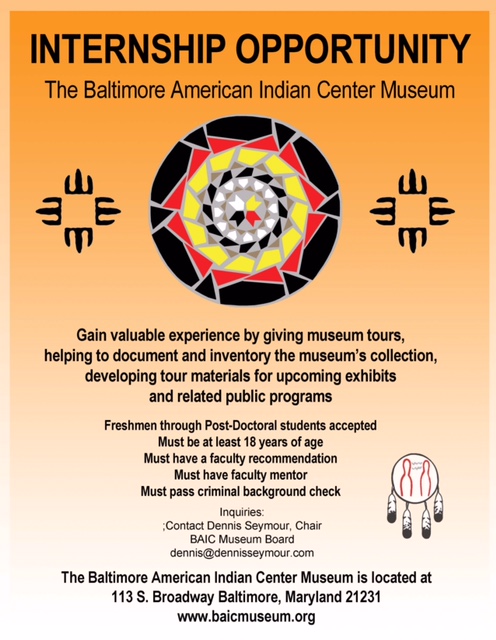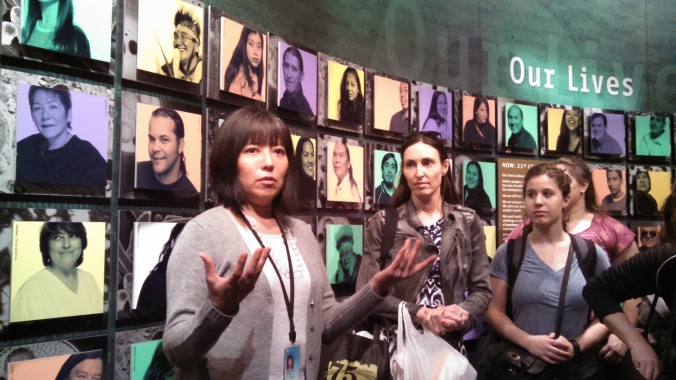To close the spring term of Museum Scholarship and Material Culture Introductory class students prepared recommendations for the new orientation space being planned for the Phillips Collection. This assignment followed two visits to the Phillips to learn about the museum and the University of Maryland Center for Art and Knowledge, a joint project of the Phillips and the University. Two student teams studied the needs of the space and developed recommendations for its design. Members of the Phillips staff joined the discussions last May at the close of the term.
Below are three images of the entry space as it was finally installed. During our visits to the Phillips the staff talked about the museum’s idea of hanging art works to create “conversations” for visitors to consider. The students were intrigued by this idea and recommended that the entry space provide visitors with an introduction to the concept; it’s heartening to see that language in the wall text.
University of Maryland students are granted open admission to the Phillips Collection, simply bring your university ID and take advantage of the engaging exhibits in a lovely central Washington space. Watch for programming from the Center, including opportunities for special research projects. The museum’s website can be accessed at PhillipsCollection.org
What museum have you visited recently and what stories can you tell of your visit? How does your visit affect your ideas about museums as contributors to knowledge? Share your comments here.
Mary Alexander
Co-Director
Museum Scholarship and Material Culture Studies
University of Maryland



